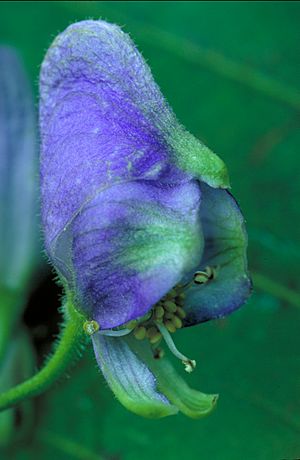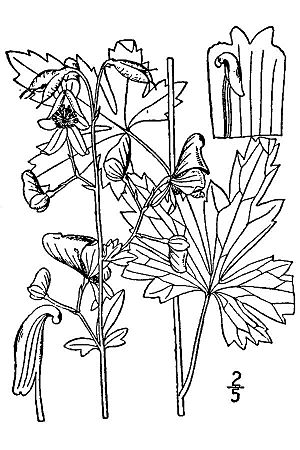Wild monkshood facts for kids
Quick facts for kids Wild monkshood |
|
|---|---|
 |
|
| Scientific classification | |
| Genus: |
Aconitum
|
| Species: |
uncinatum
|
Aconitum uncinatum, also known as wild monkshood or southern blue monkshood, is a type of flowering plant. It belongs to the buttercup family, which is called Ranunculaceae. This plant often grows in wet places. You can find it near streams, in forests, and in open areas. It lives in the eastern United States. This includes the Appalachian Mountains, the Piedmont region, and the upper Atlantic Coastal Plain.
Contents
About Wild Monkshood
Wild monkshood is a beautiful plant. It has unique flowers that look a bit like a monk's hood. This is where its common name comes from. The plant is known for its bright blue or purple flowers. These flowers usually bloom in late summer or fall.
Where Wild Monkshood Grows
This plant likes places that are damp or wet. It often grows in the shade of trees. You can spot it along the banks of small rivers or creeks. It also thrives in clearings within woodlands. Its natural home is in the eastern parts of North America.
Is Wild Monkshood Safe?
It is very important to know that wild monkshood is a poisonous plant. Its roots and seeds contain special chemicals called alkaloids. These chemicals can be harmful if eaten. They are most dangerous before the plant flowers. Because of this, you should never eat any part of this plant. It is best to admire it from a distance.
Past Uses of the Plant
In the past, people sometimes used parts of this plant to make medicine. They believed it could help with certain kinds of pain. For example, it was used for nerve pain like neuralgia and sciatica. However, using this plant for medicine is very risky. This is because it is so poisonous. Today, doctors use safer and more effective medicines. It is never safe to use wild plants for medicine without expert advice.


